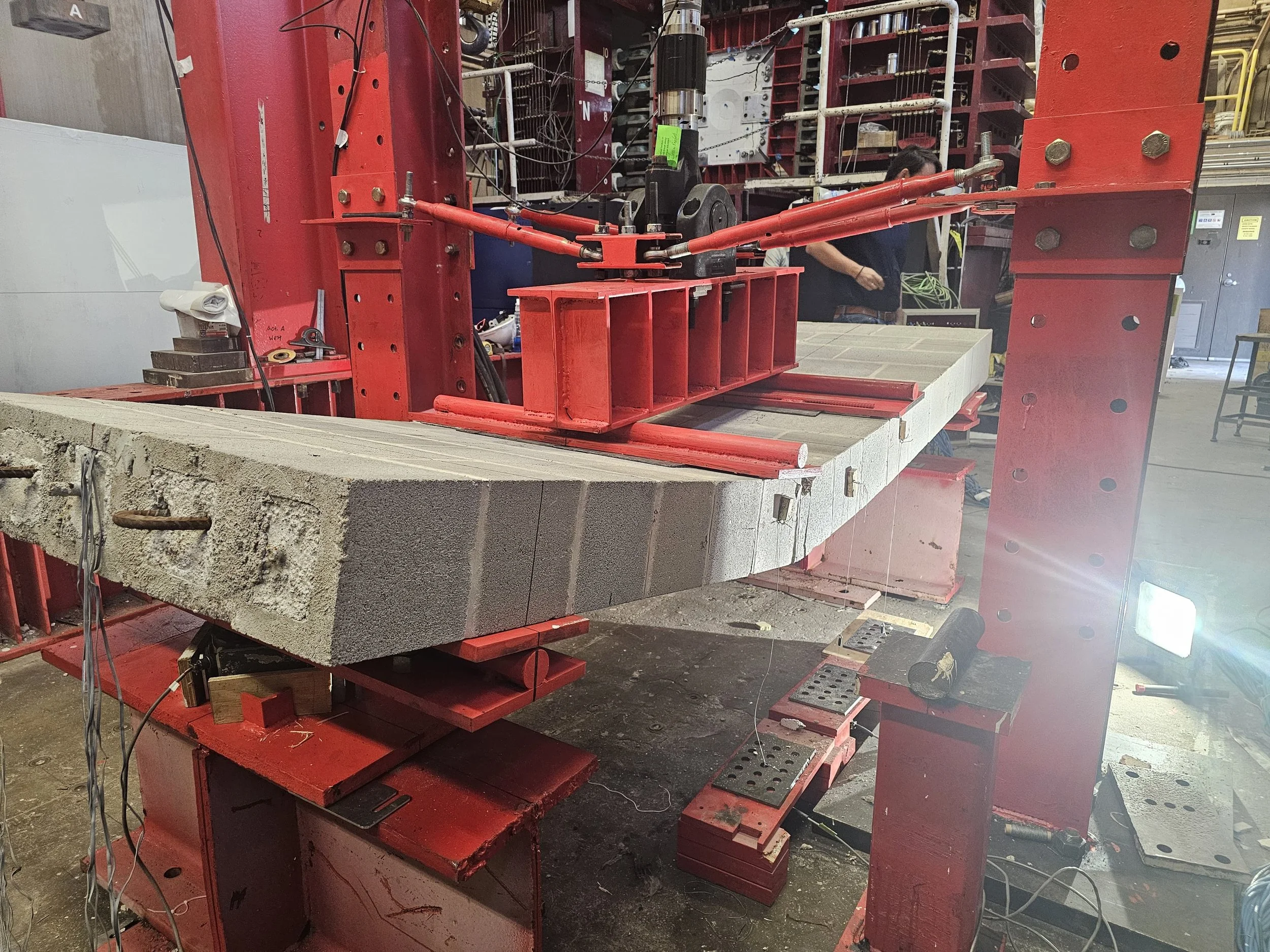High-Strength Steel Bars Adopted by TMS 402/602 Based on SP-I’s Research
In the United States, the adoption of high-strength non-prestressed reinforcing bars (HSRBs) in design was initiated by the reinforced concrete industry through ACI 318. The adoption was motivated by several factors including the ability to increase bar spacings, reduce steel congestion, reduce construction materials and costs, and minimize the building carbon footprint. To ensure that the masonry industry adapts to these new rebar developments and adoptions, the University of Houston has embarked on a research program to investigate the feasibility of HSRBs in structural masonry design. Using the help of rebar manufacturers, including Nucor Rebar and D’ambra Construction, along with masonry stakeholders (NCMA, WSCPA, BIA, Best Block, TMC), the program has completed a series of laboratory tests to evaluate existing TMS 402/602 provisions on lap-splice length and flexural design for HSRBs. A series of feasibility studies for applications of HSRBs in masonry buildings was also performed. Findings showed that reductions in reinforcing material costs can reach 25% by using Grade 80 versus Grade 60 bars. These benefits can be further increased considering reductions in material weights and cell grouting. Read more here.
Figure. Flexural test of masonry wall reinforced with Grade 80 deformed bars.
Based on these findings and experimental data, TMS 402/602 has recently approved the adoption of Grade 80 reinforcing bars in the flexural design of structural masonry. The research program at the University of Houston continues the necessary experimental work to enable the use of Grade 80 bars for special shear walls and in shear design.
